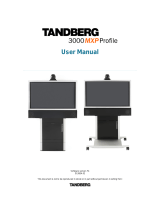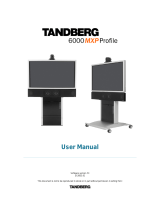
User Manual
6
3.11.6 Take New Snapshot................................................................................................. 56
3.11.7 Display Snapshot..................................................................................................... 57
3.12 MultiSite Services .............................................................................................................. 58
3.12.1 Request Floor and Release Floor............................................................................ 59
3.12.2 Terminal Names....................................................................................................... 60
3.12.3 Chair Control............................................................................................................ 61
3.12.4 Assign Floor and Release Floor from Participant.................................................... 62
3.12.5 View Site and End View........................................................................................... 63
3.12.6 Disconnect Participant............................................................................................. 64
3.12.7 Terminate Meeting................................................................................................... 65
3.13 Control Panel ..................................................................................................................... 66
3.13.1 User Guide............................................................................................................... 67
3.13.2 Streaming................................................................................................................. 68
3.13.3 Far End Control........................................................................................................ 70
3.13.4 Camera Preset......................................................................................................... 71
3.13.5 Text Chat ................................................................................................................. 72
3.13.6 System Information.................................................................................................. 73
3.13.7 Administrator Settings.............................................................................................. 74
3.13.8 Restart ..................................................................................................................... 75
4 Administrator Settings............................................................................................................ 76
4.1 General Settings .................................................................................................................. 77
4.1.1 Language................................................................................................................. 78
4.1.2 System Name .......................................................................................................... 79
4.1.3 Auto Answer............................................................................................................. 80
4.1.4 Max Call Length....................................................................................................... 81
4.1.5 Global Phone Book Settings.................................................................................... 82
4.1.6 Permissions ............................................................................................................. 83
4.1.7 Software Options ..................................................................................................... 85
4.2 Menu Settings...................................................................................................................... 86
4.2.1 Menu Timeout In Call............................................................................................... 87
4.2.2 Welcome Menu........................................................................................................ 88
4.2.3 Welcome Picture...................................................................................................... 89
4.2.4 Logo......................................................................................................................... 90
4.2.5 Balloon Help............................................................................................................. 91
4.2.6 Display Welcome Text............................................................................................. 92
4.2.7 Welcome Text.......................................................................................................... 93
4.2.8 Administrator Password........................................................................................... 94
4.3 Presentation Settings........................................................................................................... 95
4.3.1 Presentation Start .................................................................................................... 96
4.3.2 H.239........................................................................................................................ 97
4.3.3 Startup Video Source............................................................................................... 98
4.3.4 Presentation Source ................................................................................................ 99
4.3.5 Snapshot Source ................................................................................................... 100
4.3.6 Auto-Display Snapshot .......................................................................................... 101
4.3.7 PIP Appearance..................................................................................................... 102
4.3.8 PIP Placing ............................................................................................................ 103
4.3.9 VNC Settings ......................................................................................................... 104
4.4 Call Quality......................................................................................................................... 105
4.4.1 Video Algorithm...................................................................................................... 106
4.4.2 Audio Algorithm...................................................................................................... 107
4.4.3 Natural Video ......................................................................................................... 108
4.4.4 Video Quality.......................................................................................................... 109
4.4.5 Default Call Settings .............................................................................................. 111
4.5 Audio.................................................................................................................................. 114
4.5.1 Headset Level Settings.......................................................................................... 115
4.5.2 Alert Tones and Volume ........................................................................................ 116
























